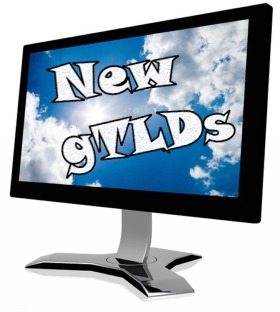|
According
to
nGTLDStats.com
102 new gTLDs have at
least a tiny share of the
registrations that have been made to
date (though for ten of those TLDs
the share is about as as close to
zero as you can get - a miniscule 0.01%).
As of today, the top ten new
gTLDs cumulatively hold 45%
of all new gTLD registrations, reminding me
of an argument that new gTLD skeptic
Rick Schwartz has frequently
made - that if you are
not among the top ten, your
visibility in the marketplace is
going to be foggy at best.
Today
we already have 92 other extensions
fighting for a a sliver of the half
of the pie the top ten has left on
the plate.
Next year hundreds more will
be competing for a morsel. Equally
daunting is that the registration
numbers, even for the top ten, are
not exactly eye popping - they total
just 286,333 for that top
tier as of today.
|

|
|
Several,
like current leader, .guru
(with 53,195), got off to a
fast start only to see the momentum
quickly fade. New #4, IDN 在线
(Chinese for .online), introduced
just yesterday, had an impressive
debut in the 30,000
neighborhood and hopes the huge
market in China will give their
offering stronger "legs"
than some of the others have
shown.
One
problem is that after the initial
splash for each new gTLD, the
attention is immediately diverted
to a new round of releases just
a week later. There is an old saying
that you need to make hay while the
sun shines - but the manic new gTLD
release schedule gives each new
extension only a minute or two of
daylight.
|
It
is still very early in the
game and different TLDs may
prove to be more attractive by
offering stronger
keywords, better pricing, more
aggressive marketing, etc. Pricing,
particularly for |
|

Sticker
shock image from Bigstock |
those registries
that want a share of the
domain investment market,
appears to be an area where a
lot of TLDs need to go back to
the drawing board. Frank
Schilling's Uniregistry.com
recently released the first
value priced generic TLD, .link,
under $10 at some registrars,
and it has shot into the top
ten - #6 today with
just under 23,000
registrations.
Others
asking for hundreds of dollars
up front and hundreds of
dollars to renew annually are,
as you would expect,
languishing. Sticker shock
usually leaves a poor first
impression, especially when it
involves an unknown new
product of - at least at this
stage of the game -
questionable value. |
No
doubt we will see a lot of
adjustments as the game plays out
and the individual registries get a
better handle on what the market
will bear. The challenge for them
will be to make those adjustments
before they become a footnote in the
history of this unprecedented
experiment.
|